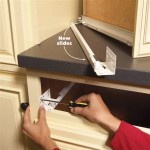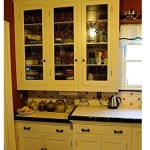Essential Considerations for Painting Your Kitchen Cabinets
Transforming your kitchen with a fresh coat of paint on your cabinets can breathe new life into your space. This project can be budget-friendly and rewarding, but careful planning and preparation are crucial to achieve a professional-looking result that will last for years to come.
Materials and Preparation
Before applying paint, thoroughly clean your cabinets with a degreaser orTSP (trisodium phosphate) solution to remove grease and grime. Once clean, remove all hardware (handles, knobs, etc.) and apply painter's tape to protect adjoining surfaces. Protect your floors with drop cloths or plastic sheeting.
When selecting paint, choose a high-quality product specifically formulated for kitchen cabinets. Consider using a combination of primer and paint, or a self-priming paint, to provide maximum adhesion and durability.
Surface Preparation
Proper surface preparation is essential for ensuring a smooth and long-lasting finish. Sand all cabinet surfaces with fine-grit sandpaper (220 grit or higher) to remove any imperfections or old paint. This will create a rougher surface for the paint to adhere to.
Once sanded, vacuum or wipe down the cabinets to remove all dust particles. If your cabinets have any imperfections or damage, fill them with spackling paste and sand them smooth once dry.
Priming
Applying primer is a crucial step that enhances paint adhesion, seals the wood, and prevents stains from bleeding through the paint. If using a primer, apply a thin coat to all sanded surfaces using a brush or roller. Allow the primer to dry completely before applying paint.
Painting
When painting, use a high-quality brush or roller specifically designed for cabinets. Apply thin, even coats, allowing each coat to dry before applying the next. Avoid applying thick layers, as this can lead to drips, runs, or peeling.
To paint the insides of cabinets, use a foam brush or small angled brush to reach all corners and angles. For larger cabinets, consider removing the doors and drawers for easier access.
Cure Time and Reassembly
Once the final coat of paint has been applied, allow the cabinets to cure for at least 24 hours before reassembling. This will ensure that the paint has fully hardened and dried, reducing the risk of damage.
Reassemble the cabinets carefully, ensuring that all hardware is tightened securely. Allow the paint to cure for an additional 3-5 days before using the cabinets extensively to prevent any damage from everyday use.

Should I Paint My Kitchen Cabinets Helix Painting

How To Paint Kitchen Cabinets In 7 Simple Steps

Should I Paint My Kitchen Cabinets Lily Ann

How To Paint Kitchen Cabinets In 7 Simple Steps

How To Paint Kitchen Cabinets Without Sanding Or Priming

How To Paint Kitchen Cabinets A Step By Guide Confessions Of Serial Do It Yourselfer

Should I Paint My Kitchen Cabinets

How To Paint Kitchen Cabinets

How To Prep And Paint Kitchen Cabinets Lowe S

Avoid These Mistakes How To Paint Cabinets That Are Already Painted Grace In My Space
Related Posts








